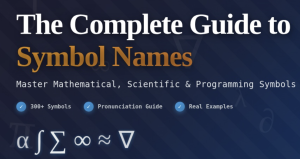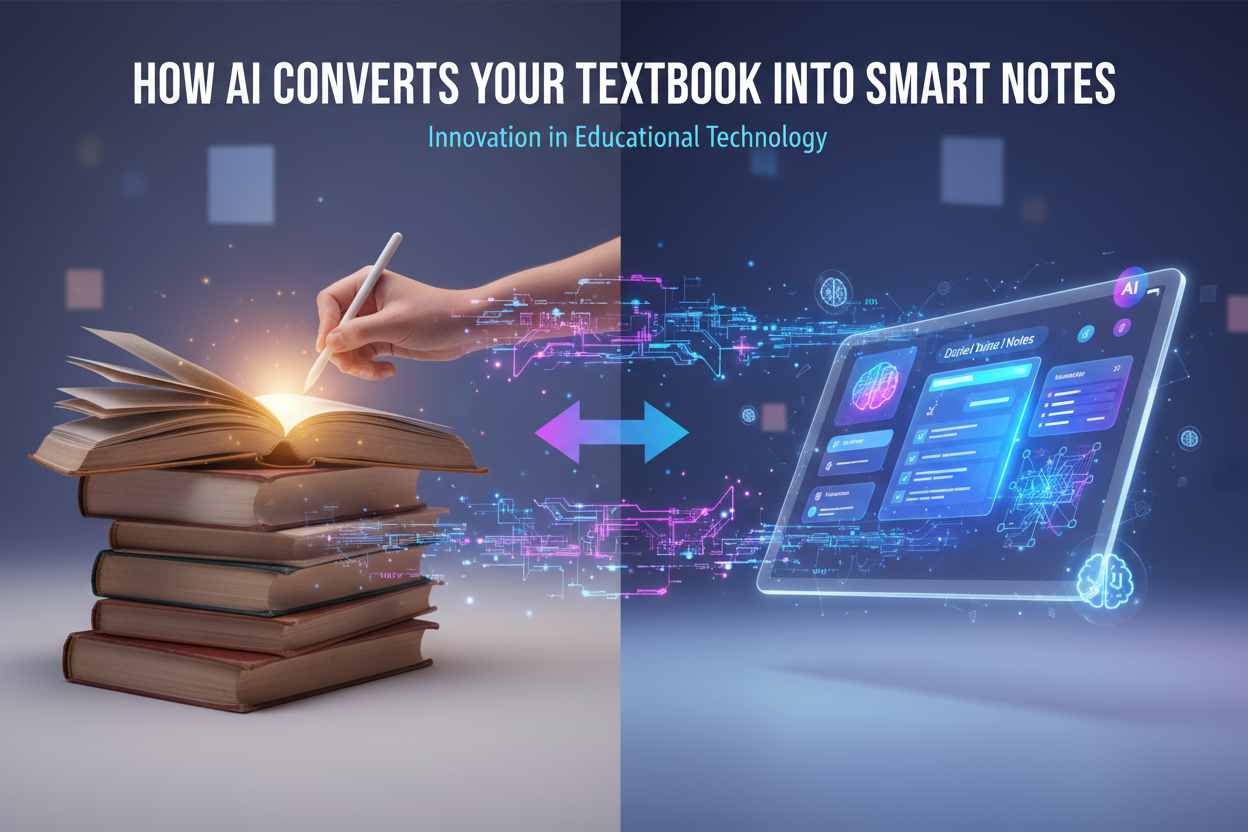Studying from heavy textbooks can feel overwhelming, especially when exams are near and every chapter looks long and complicated. Students preparing for board exams, NEET or JEE often struggle with managing time while trying to understand every concept. This is where Artificial Intelligence (AI) offers a revolutionary solution.
In this guide, you’ll learn how AI converts your textbook into smart notes using advanced tools, intelligent summarisation and simplified explanations.
What Are Smart Notes?
Smart notes are short, meaningful summaries created from long chapters. They include bullet points, formulas, tables, mind maps and important highlights. These notes help students revise faster without missing important concepts.
Smart notes also reduce confusion because they convert tough language into easy, student-friendly explanations.
How AI Converts Your Textbook Into Smart Notes
1. AI Reads and Understands the Text Using NLP
AI tools use Natural Language Processing (NLP) to read and understand the full chapter. They scan paragraphs, definitions, diagrams and key concepts. This step ensures every important part of the text is captured.
2. AI Detects Important Concepts and Exam-Level Points
AI understands which concepts carry high weightage in exams. It identifies:
-
Definitions
-
Formulas
-
Diagrams
-
Key terms
-
NCERT-based lines
This step ensures that nothing important gets missed.
3. AI Removes Repetitive and Unnecessary Information
Textbooks often include long explanations and repeated ideas. AI filters out unnecessary sentences, removes repetition and keeps only exam-ready content.
This makes smart notes short, simple and highly effective.
4. AI Simplifies Difficult Language Into Easy Explanations
One major benefit is simplified language. AI rewrites complex lines into easy-to-understand sentences.
For example:
Textbook version:
“Respiration is a biochemical process involving energy release.”
AI smart note version:
“Respiration is the process where cells release energy.”
This helps students understand concepts instantly.
5. AI Organises Notes in Clear, Visual Formats
AI arranges notes using:
-
Bullet points
-
Headings and subheadings
-
Tables
-
Flowcharts
-
Mind maps
-
Comparison charts
Example:
| Topic | Mitosis | Meiosis |
|---|---|---|
| Purpose | Growth | Formation of gametes |
| Cells produced | 2 | 4 |
| Division count | 1 | 2 |
Such visual formats make revision faster and memory stronger.
6. AI Highlights High-Yield Exam Points
AI also marks important areas such as:
-
Must-memorise formulas
-
Frequently asked definitions
-
Diagram labelling
-
Chapter summary points
This makes revision highly targeted and exam-ready.
7. AI Creates Fast Revision Tools
AI doesn’t stop at notes. It also creates:
-
1-page summaries
-
Formula sheets
-
Flashcards
-
Quick MCQs
-
True/false questions
-
Short answer banks
These revision tools save hours of study time.
Why AI Smart Notes Are Better Than Manual Notes
✔ Faster
AI makes notes in seconds instead of hours.
✔ Error-Free
No missed points or wrong explanations.
✔ Customisable
Students can ask AI to shorten, expand or simplify notes.
✔ Better for Revision
Smart notes are crisp and structured—perfect for last-minute prep.
✔ Improved Understanding
Simplified language ensures stronger concept clarity.
How Students Can Use AI Smart Notes Effectively
-
Read AI smart notes before starting a chapter
-
Ask AI to explain difficult topics simply
-
Use formula sheets daily for strong retention
-
Convert notes into MCQs for self-testing
-
Use 1-page summaries before exams
Students who combine textbooks with AI smart notes learn faster and score higher.
The Future of Learning With AI
AI is reshaping the education world. It helps students study smartly, understand deeply and revise efficiently. Instead of spending hours making notes, students can now focus on practising questions, solving doubts and strengthening concepts.
With AI becoming more accessible, the future of learning will be more personalised, adaptive and stress-free.
Also Read: Coding Is the New English: Start Before It’s Too Late




